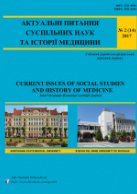ЕТНОГРАФІЗМИ ЯК ЗАСІБ СТИЛІЗАЦІЇ РОЗМОВНОСТІ В СУЧАСНІЙ ХУДОЖНІЙ ОПОВІДІ
ETHNOGRAPHISMS AS MEANS OF COLLOQUALITY STYLIZATION IN THE MODERN BELLETRISTIC NARRATION
Author(s): Taissia TsurkanSubject(s): Language and Literature Studies, Studies of Literature
Published by: Видавництво ВДНЗ України « Буковинський державний медичний університет »
Keywords: language of prose; colloquality; colloquality stylization; ethnographism; artistic text; expressiveness;
Summary/Abstract: The artistic text – is a worldview, modeled by the author in order to reproduce the local flavor and in order to individualize the personage’s character. It is against the background of artistic speech that the processes of diffusion – mutual penetration of the elements of the functional-stylistic sphere one into another – is most contrastively exposed in accordance with the objectives and purposes of communication. This process is most clearly presented in the language of literature as a kind of stylistic model of real communication. One of the most powerful segments of such interaction – is penetration of the elements of oral-speaking areas (non-literary and literary) into the language of art, mainly prose. Such phenomena are caused by the artist's focus on aesthetization of real language situations which are inseparable from the events embraced by the category ‘colloquality’. In this regard, in the theory of literary language development the thesis of the dynamics of linguistic norm is one of the central, the one which determines the ratio of literary and conversational elements motivated by aesthetic canons of the time. Conscious providing of characteristic features of a certain style or genre to particular segments of artwork, and their artistic treatment by the author is the essence stylization. The works of XXI century Bukovinian writers (M. Matios, G. Tarasyuk, Vladimir Kozhelyanko M. Lazaruk, W. Michael) present items of Pokuttia, Bukovinian, Hutsul and other related dialects, especially denotations which occupy a special place in Hutsuls’ and Boykos’ everyday life, bearing semiotic codes of their culture. Hence, in the language of the upper mentioned writers’ prose such lexico-semantic groups of ethnographisms are informative lingual and aesthetic signs of ethnic culture through which a story is gaining its gusto and coloring.
Journal: Актуальні питання суспільних наук та історії медицини
- Issue Year: 2017
- Issue No: 1
- Page Range: 40-43
- Page Count: 4
- Language: Ukrainian

